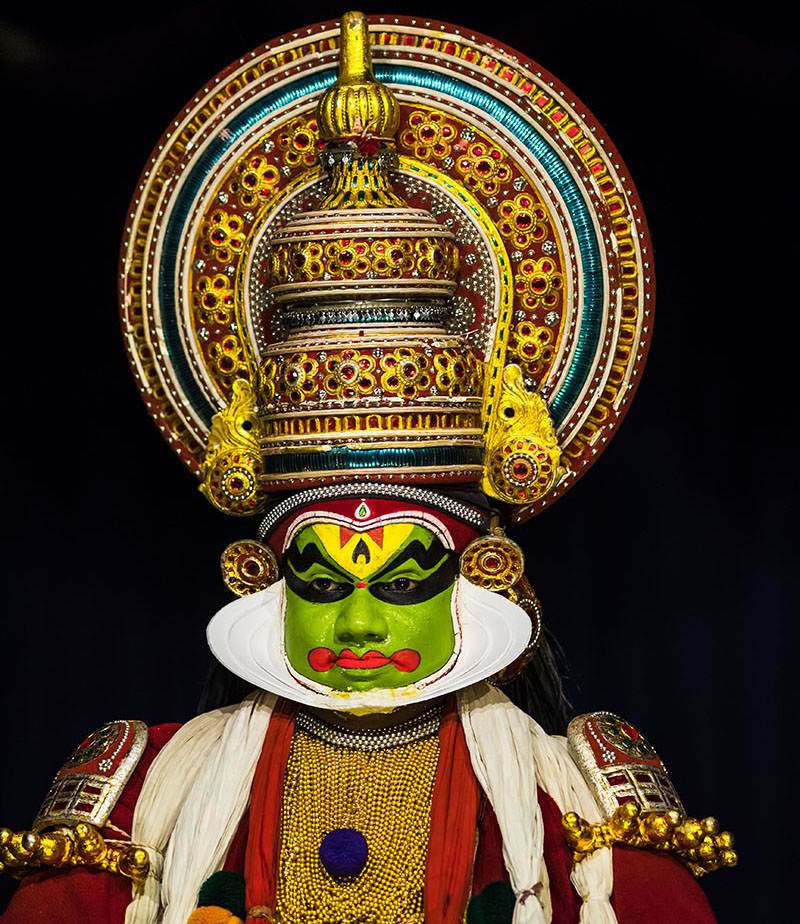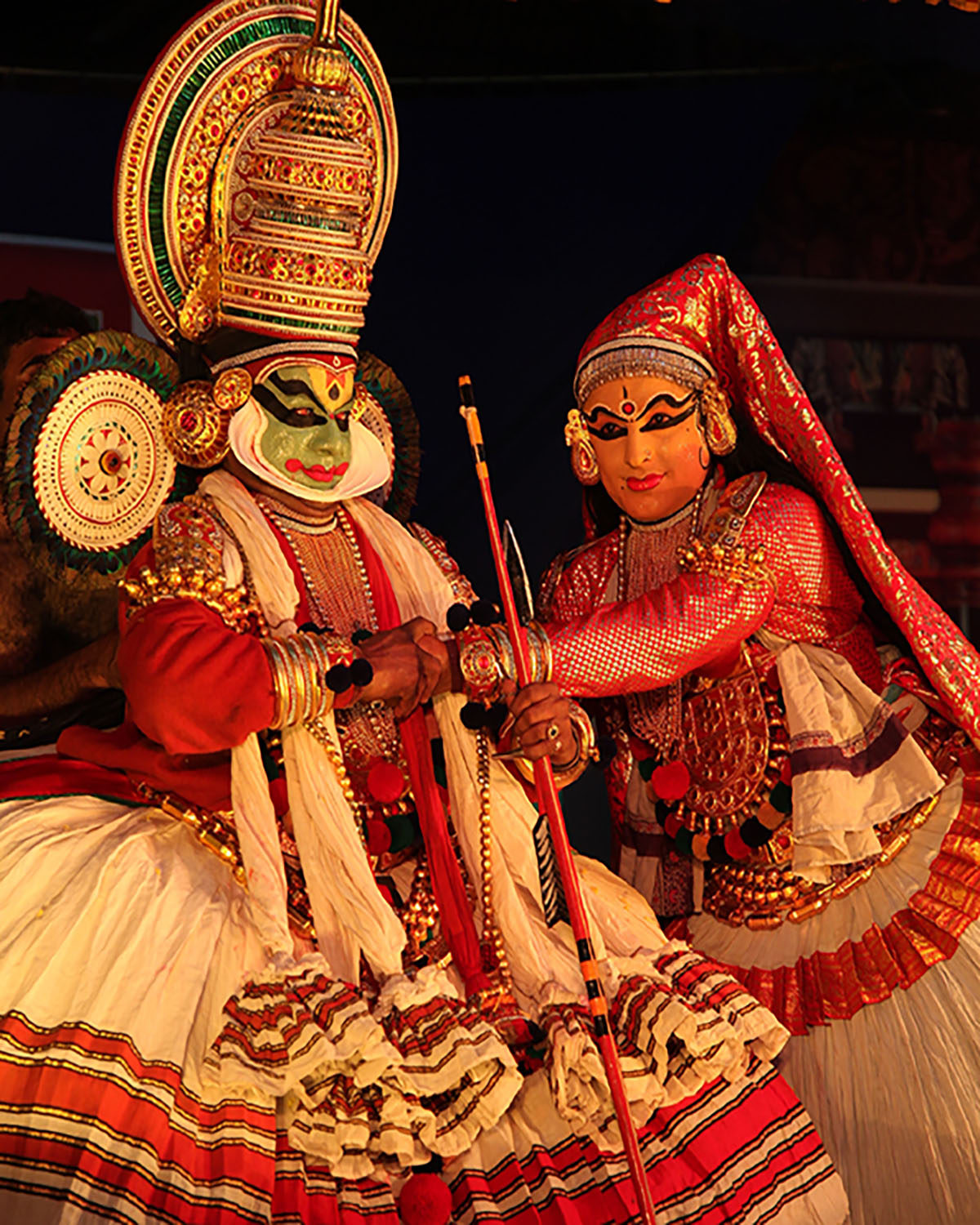ARTICLE
Kathakali
Early Kathakali performances were held in the compounds of family homes or outside temple walls, on a rectangular ground cordoned off with poles and cloth. The stage was generally bare, with the exception of a handheld curtain. More recently, performances are held in stage performance venues. The performers undergo a rigorous makeup and costuming process before the performance, taking up to three hours. Props such as weapons, generally made from lightweight wood, are often used. Other objects, such as chariots, are represented through mimetic actions. Performances originally lasted all night, beginning at dusk and ending at dawn. Contemporary kathakali performances reduce or remove the introductory segments entirely, making them two to three hours long.
The performance begins with the lighting of an oil lamp, accompanied by the singing of ceremonial verses. The performance then starts with the totayam and purappatu, introductory dances. As the story is enacted, four kinds of dances may be performed to further accentuate the padam – kalasam, iratti, tonkaram and nalamiratti. Of these, the kalasam is considered the most important and recurs frequently throughout the performance. The basic stance of a kathakali performer consists of feet placed parallel to each other at shoulder width, with the knees bent outward. The lower back of the performer is curved inwards towards the belly, allowing the arms to stretch wide. This accounts for the heavy mask and costume worn by the performers, keeping their centre of gravity low. Their footwork follows rectangular, straight, diagonal or circular patterns. Eye movements, along with facial and hand gestures, are employed to express the bhava or inner state of the character. The performers are primarily men, though women began to join kathakali performances from the mid- to late twentieth century. Kathakali performers were traditionally from and patronised by the upper castes, such as the Nairs and Namboodiri Brahmins; its popularity today has prompted the participation of performers from more diverse social backgrounds.
Though it originated in the seventeenth century, kathakali began to flourish towards the mid-eighteenth century under the patronage of Kartika Tirumal Rama Varma Maharaja of Travancore and Vira Kerala Varma of Kochi. Royal patronage continued until the nineteenth century, after which elite landowning families also began to patronise the form. Many of the features that characterize modern kathakali had emerged by this time.
Social and legal reforms in the 1920s worsened the financial position of elite households, rendering many of them unable to patronise kathakali. This led to the establishment of a number of institutions that sought to perpetuate the form, including the Kerala Kalamandalam of Mahakavi Vallathol Narayana Menon, established 1930; the Sri Muthappan Kathakali Yogam, founded in 1938 by P M Kunhi Raman; the P S V Natyasangham founded by P S Varier in 1939; the Unnayi Warrier Smaraka Kalanilayam training school in 1955; the FACT Kathakali School in 1965; and the kathakali training and performance company Margi, established in 1969.
In the twentieth century, kathakali began to be used in new settings and was applied to different subject matter. Guru Gopinath and Ragini Devi used it extensively in composite dance dramas for urban stages; kathakali adaptations of the story of the Buddha, Mary Magdalene, Homer’s Iliad, Shakespeare’s King Lear and Goethe’s Faust were also performed.
Today, kathakali performances are conducted in urban areas by private clubs and stage performance avenues. These performances are open to tourists and aficionados of the form to attend. Performances in villages are also conducted, generally sponsored by temples or associated with annual festivals.
Bibliography
Our website is currently undergoing maintenance and re-design, due to which we have had to take down some of our bibliographies. While these will be re-published shortly, you can request references for specific articles by writing to hellomapacademy@map-india.org.









